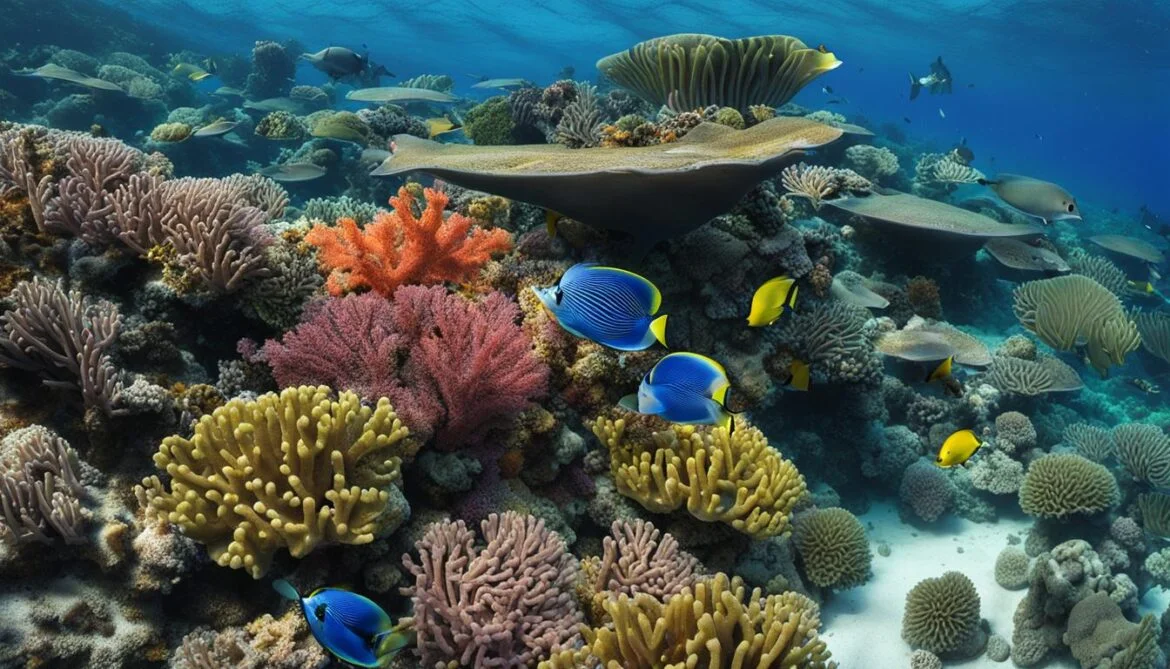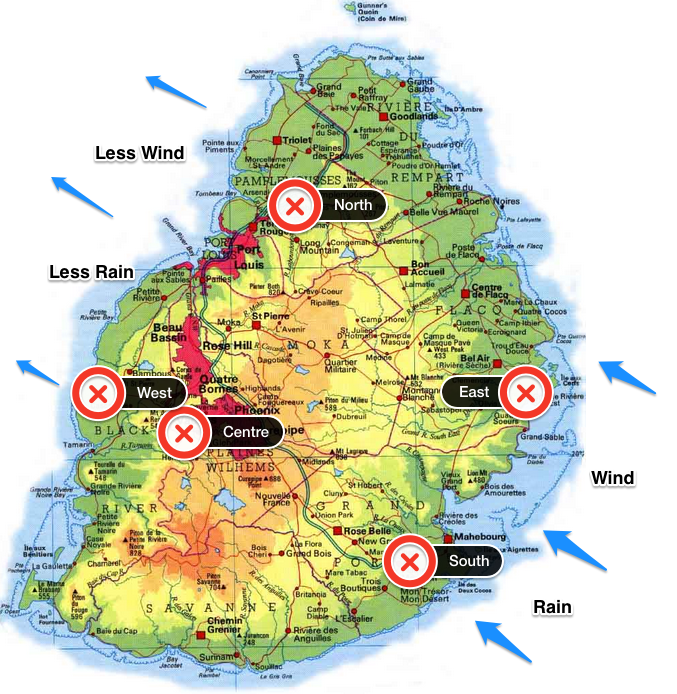Mauritius is a small island nation in the Indian Ocean, known for its stunning natural beauty, vibrant culture, and unique biodiversity. As an isolated volcanic island, Mauritius has evolved a remarkable array of endemic species found nowhere else on Earth. These remarkable creatures and plants have captivated the imagination of scientists, nature enthusiasts, and travelers alike, each with their own fascinating story to tell.
Have you ever heard of the Dodo bird? This flightless avian endemic to Mauritius captured the world’s attention when it was hunted to extinction in the 17th century. But did you know that Mauritius is home to a diverse array of other endemic species, each with its own incredible tale? From the enigmatic Mauritius kestrel, a bird of prey that was once on the brink of extinction, to the critically endangered Mauritius fruit bat, the island’s biodiversity is a true marvel to behold.
Exploring the intricate web of life that has evolved on this tiny island paradise is a journey of wonder and discovery. Join me as we delve into the fascinating world of Mauritius’ endemic species, uncovering the remarkable adaptations and evolutionary histories that have shaped these one-of-a-kind creatures.
Let’s start our journey by exploring the vibrant green forests of Mauritius. As you wander through the lush vegetation, you might catch a glimpse of the Mauritius olive white-eye, a small, delicate bird with striking bright eyes. This endemic species is found nowhere else on Earth, and it plays a crucial role in the island’s ecosystem, acting as a pollinator and seed disperser.
But the forests of Mauritius are home to much more than just birds. Hidden among the trees, you might spot the Mauritius parakeet, a vibrant green parrot with a distinctive red collar. This stunning bird was once on the brink of extinction, with only a handful of individuals remaining in the wild. Thanks to dedicated conservation efforts, the Mauritius parakeet has made a remarkable comeback, but its future still hangs in the balance.
As you continue your exploration, you might stumble upon the Mauritius fruit bat, a critically endangered species found only in Mauritius. These magnificent creatures, with their impressive wingspans and gentle demeanor, play a vital role in the island’s ecosystem, serving as pollinators and seed dispersers for a wide variety of plants. Sadly, the Mauritius fruit bat faces numerous threats, from habitat loss to hunting, and its survival hangs in the balance.
But Mauritius’ biodiversity is not limited to its iconic vertebrate species. The island is also home to a diverse array of endemic invertebrates, each with its own unique adaptations and evolutionary history. Take, for example, the Mauritius cave spider, a delicate arachnid that has adapted to the island’s subterranean world. These spiders, found only in the caves and crevices of Mauritius, are a fascinating testament to the island’s geological history and the remarkable ways in which life can adapt to even the most challenging environments.
As you delve deeper into Mauritius’ endemic species, you might also encounter the Mauritius fody, a small, vibrant songbird with a striking plumage. These birds, found only in Mauritius, have developed a unique relationship with the island’s native plants, acting as pollinators and seed dispersers. Their survival is crucial to the health of the island’s ecosystems, and their presence is a testament to the intricate interconnectedness of all living things.
But the story of Mauritius’ biodiversity is not without its tragedies. The iconic Dodo bird, which once roamed the island in abundance, was hunted to extinction in the 17th century, a cautionary tale of the devastating impact that human activity can have on delicate island ecosystems. The loss of the Dodo was a profound tragedy, and it serves as a stark reminder of the fragility of Mauritius’ endemic species and the urgent need for conservation efforts.
Yet, despite the challenges, Mauritius remains a beacon of hope for the preservation of rare and endangered species. The Mauritius kestrel, a small bird of prey that was once on the brink of extinction, has made an incredible comeback thanks to dedicated conservation efforts. Today, these majestic birds soar over the island’s forests, a testament to the power of human intervention and the resilience of nature.
As you continue your journey through Mauritius’ endemic wonders, you might encounter the Mauritius endemic snail, a humble creature that has captivated the imagination of scientists and nature lovers alike. These tiny snails, found only in the island’s forests and caves, have evolved remarkable adaptations to survive in their unique environment, from their intricate shell designs to their specialized feeding habits.
But Mauritius’ biodiversity is not just limited to its terrestrial species. The island’s surrounding waters are home to a diverse array of marine life, including the critically endangered Mauritius round island boa, a snake that has adapted to life in the ocean. These incredible creatures, found only in the waters surrounding Mauritius, are a testament to the island’s unique geological history and the remarkable ways in which life has evolved to thrive in even the most challenging environments.
As you delve deeper into the world of Mauritius’ endemic species, you might find yourself captivated by the island’s unique plant life. From the endemic Mauritian ebony, a distinctive tree with dark, glossy leaves, to the Mauritius pink pigeon orchid, a delicate and fragrant flower found nowhere else on Earth, the island’s botanical wonders are a true feast for the senses.
But what is it that makes Mauritius’ biodiversity so unique, and why is it so important to protect? The answer lies in the island’s remarkable geological history and its isolation from the rest of the world. As a volcanic island that emerged from the ocean millions of years ago, Mauritius has been a laboratory for evolution, with species adapting and diversifying in response to the island’s unique environmental conditions.
Over time, this isolation has led to the development of a diverse array of endemic species, each with its own unique adaptations and evolutionary histories. These species have played a crucial role in shaping the island’s ecosystems, serving as pollinators, seed dispersers, and key components of the food web. Their loss would have profound consequences for the delicate balance of life on Mauritius.
Yet, despite the island’s remarkable biodiversity, Mauritius faces a range of threats, from habitat loss and fragmentation to invasive species and climate change. As the human population on the island continues to grow, the pressure on the island’s natural resources is only intensifying, putting the survival of Mauritius’ endemic species at risk.
So, what can we do to protect Mauritius’ unique biodiversity? The answer lies in a combination of dedicated conservation efforts, scientific research, and public awareness. Through initiatives like habitat restoration, species reintroduction, and the establishment of protected areas, we can work to safeguard the future of Mauritius’ endemic species.
But this is just the beginning. By shining a spotlight on the wonders of Mauritius’ biodiversity and inspiring others to learn about and appreciate these remarkable creatures, we can foster a deeper understanding and appreciation for the island’s natural heritage. After all, it is our responsibility to ensure that Mauritius’ unique species continue to thrive, so that future generations can marvel at their beauty and wonder.
As you leave Mauritius, carrying with you the memories of the incredible endemic species you’ve encountered, you can’t help but feel a sense of awe and gratitude for the incredible diversity of life that has evolved on this tiny island. And with a renewed sense of purpose, you vow to do your part in protecting and preserving this natural wonder, so that it can continue to captivate and inspire for generations to come.



